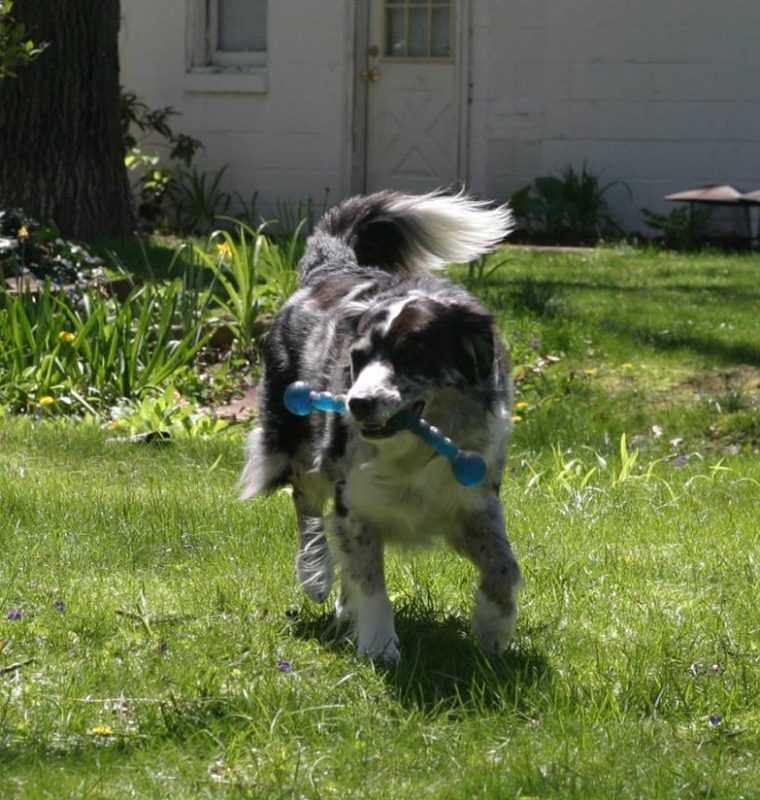Bull’s-eye: Targeted Exercise is More Effective Than Daily Physical Activity
Pain >> Compensatory patterns/Inactivity >> Muscle atrophy >> Worsened mobility >> Repeat
by Colleen Lum LVT, CCRVN, CCFT
Often times we hear from owners that their dogs are very active and run all the time outside in the yard. Despite this observation, they continue to have muscle atrophy and compensate in other areas of their bodies causing muscle tension and discomfort/pain. So then what is the difference between off leash activity and structured exercises?
Daily Exercise
When a dog is suddenly restricted from all activity, aside from a short leash walk to eliminate outside, they naturally start to atrophy, or lose muscle mass. When we implement a rehabilitation program, one of the first things we assess is which particular muscles are affected most by this loss and how can we start to strengthen them. That is where targeted exercise comes in to play.
But then how are there still patients who have muscle atrophy, despite the daily activity of walking/running in the backyard? If a dog has osteoarthritis in their right stifle (or knee), then they may be inclined to not want to use that limb as effectively as the rest of their body. Then what ends up occurring is a compensation elsewhere to make up for that limb not being able to contribute. If we were to show a slow motion video of this hypothetical dog running, odds are the affected limb is just along for the ride. The front end is using momentum to pull forward rather than power through with the hind legs. Sure we might notice that the affected limb touches the ground, but it is brief compared to the other feet and the limb is used more for balance. This is why typical daily activity is not effective in strengthening musculature nor is it recommended for acute injuries because it encourages the compensatory habit and therefore the continuation of muscle loss. So what do we do?
 Targeted Exercise
Targeted Exercise
Targeted, structured exercise! Certain therapeutic exercises are more beneficial for certain muscles, much like our own workout plans. They also need to be performed slowly enough for all the muscle fibers to engage. That is why held positions or slow movements are so challenging (think of slowly lowering into a push up vs trying to quickly move through all the reps). We want to get it done and over with but we aren’t doing ourselves any favors to strengthen the muscles the way we want to. So in the case of our hypothetical dog, let’s say that he is atrophied in the right hind limb in the hamstrings and quadriceps. So we are going to slow him down with leash walks, so that he is placing that affected limb consistently and increases weight bearing. We are also going to implement some basic strength work to engage both of those muscle groups. By slowing it down and focusing on the weakest muscles, we can build that muscle back up (obviously) and possibly improve mobility in the joint.
Now if we look at the opposite end of the spectrum in the case of our canine athletes and their conditioning, it is very similar in nature. Dogs who are running agility are used to moving at hyper speed for their sport but when we break it down and work on targeted movement, we can address areas of muscle weakness, compensation or inflexibility. By doing this, we give that dog a more rounded workout plan that decreases risk of injury and improves overall performance in all planes of motion.
Daily versus Targeted Exercise
As we have outlined today, there is a difference between day to day physical activity and targeted exercise. From a rehabilitation stand point as well as athletic conditioning, this could not be more true and is a topic that we touch on frequently with our clients and their canine companions.
